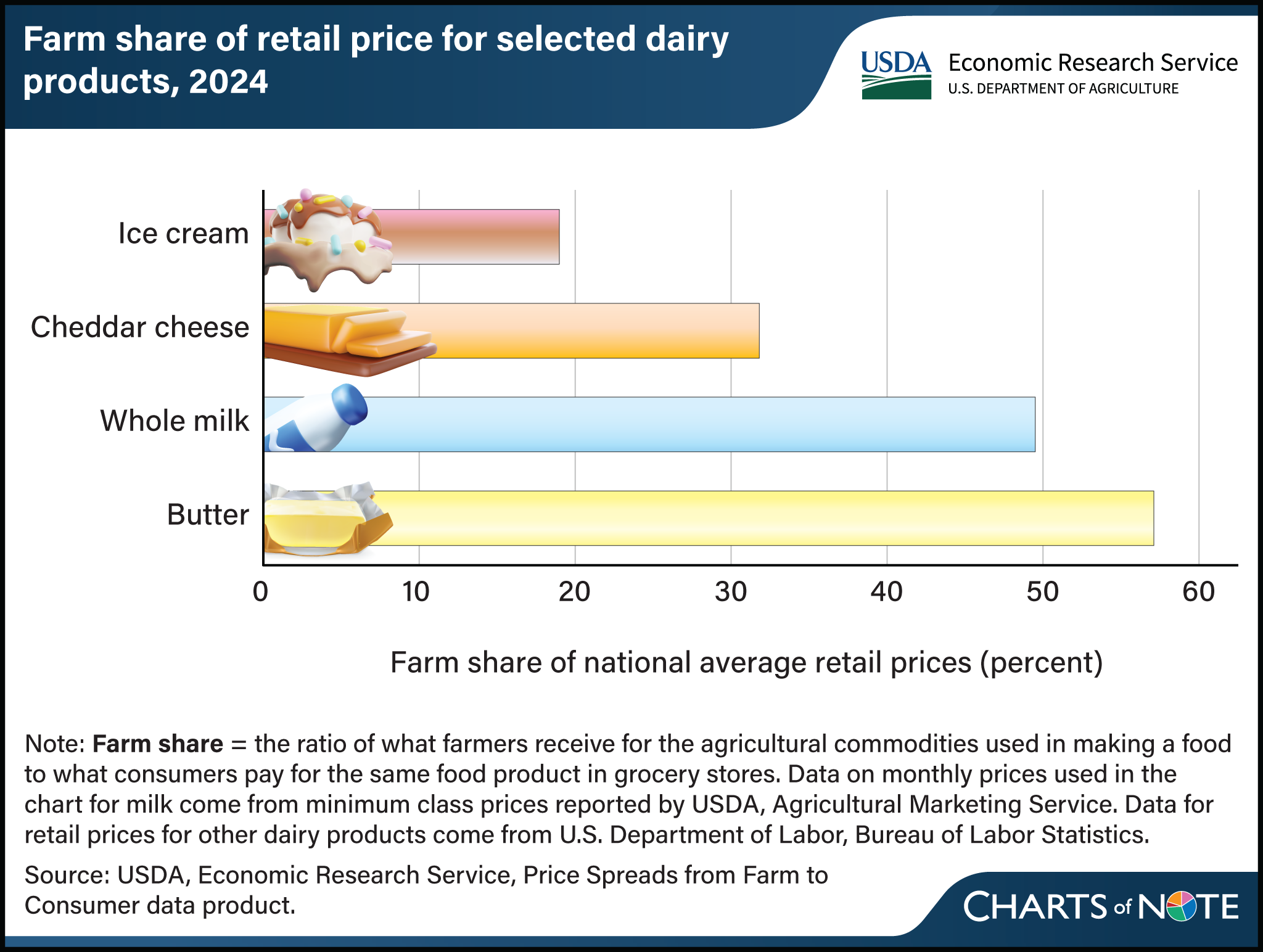Dairy farmers receive over 50 percent of butter’s retail price, less than 20 percent of ice cream’s
- by Hayden Stewart and Jeffrey Hyman
- 6/25/2025

Food processors, manufacturers, wholesalers, retailers, and foodservice providers transform raw agricultural commodities into food products for U.S. consumers. Value added to commodities through these companies’ marketing services account for a substantial portion of consumer food prices. The farm share of a dairy product’s retail price is the ratio of what farmers receive for the milk used in making a product to what consumers pay for the same product in retail stores. Ice cream, for example, is made by combining fluid milk and cream in a mix that may also include ingredients like sugar, egg yolks, and stabilizer. Still other ingredients, such as fruit or chocolate chips, may be added as the mix is cooled and churned. As a result, costs for processing and other marketing activities represent the majority of ice cream’s retail price, and in 2024 farmers received 19 percent of what consumers paid for ice cream. At the other end of the examples shown, butter, which is made by churning fluid cream, remains 80.3 percent milk fat. Payments to farmers for this milk fat exceed the value of processing and other marketing costs, and in 2024 farmers received 57 percent of what consumers paid for butter. More information on farm share data for dairy products and other types of foods can be found in the USDA, Economic Research Service Price Spreads from Farm to Consumer data product, updated in May 2025.

